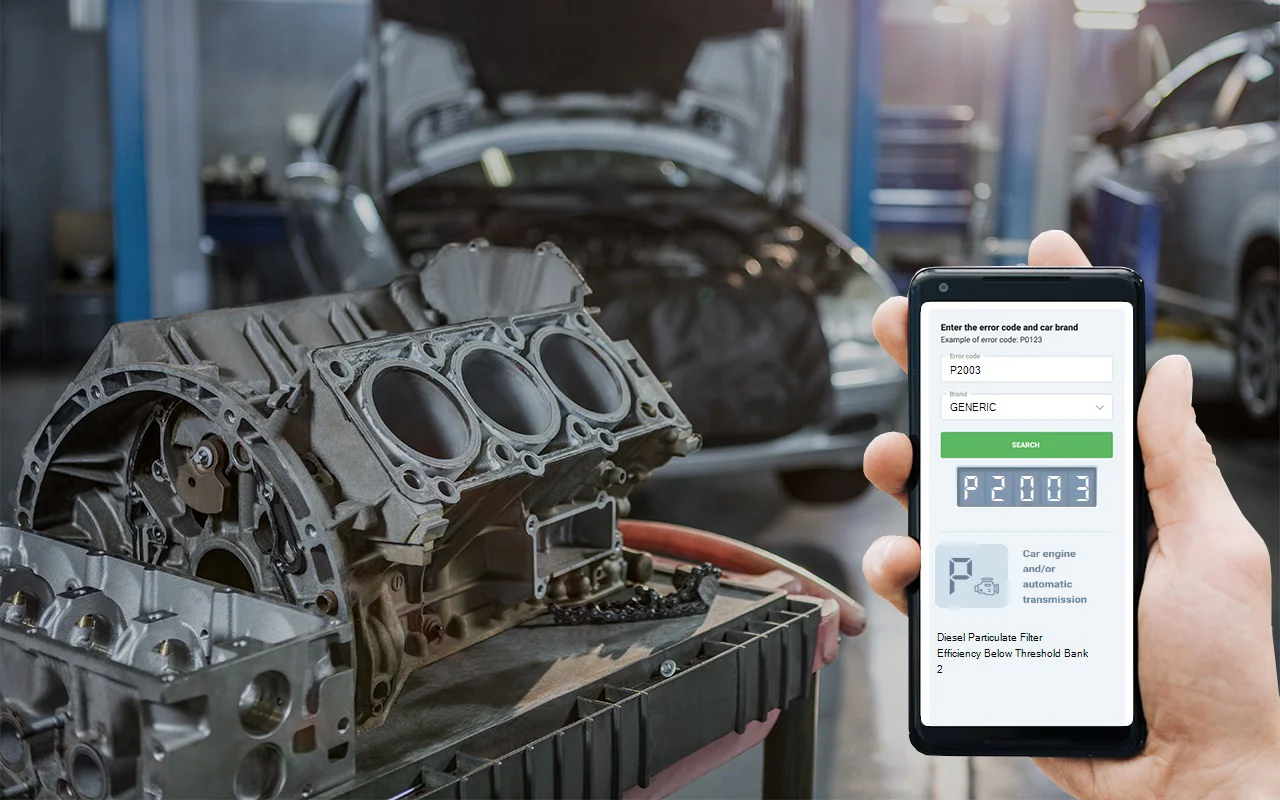Let me break this down for you based on what I’ve seen countless times in the shop: when your dash flashes a P2003 code, your car’s computer is basically telling you that the diesel particulate filter (DPF) on Bank 2 isn’t pulling its weight. The DPF has the job of trapping nasty soot and particles that would otherwise end up in the air we breathe. Your vehicle keeps a close eye on how well the DPF is doing-if it starts missing too much soot or gets overloaded, that’s when P2003 pops up. I’ve worked on Ford, Mercedes-Benz, Volkswagen, and more, and they all use this code for the same headache: Bank 2’s DPF isn’t meeting efficiency standards. The system has performance thresholds-fall short, and you’ll get a warning. Drop further, and now you’re talking a check engine light and possibly less power from the engine. All of this is meant to protect not just your motor, but the air around us too.
DTC P2003
Causes and obd code P2003
From what I’ve seen in the shop, the most common reason for a p2003 code is a DPF that’s either clogged up with soot or physically damaged. Sometimes, it’s as simple as a dirty air filter causing the engine to run poorly and overload the DPF. I’ve also come across cases where wiring or connectors going to the DPF sensors are damaged-maybe from road debris or corrosion. Here’s a quick rundown of the usual suspects:
- Clogged, damaged, or failed diesel particulate filter (DPF)
- Dirty or restricted air filter
- Damaged wiring or loose connectors at the DPF or its sensors
In my experience, the DPF itself is most often to blame, but it’s always smart to check the simple stuff first.
Symptoms and dtc P2003
When this code is active, the first thing you’ll probably notice is the check engine light or a service warning popping up on your dash. In some cases, especially if the problem gets worse, the car might limit your engine’s power to protect itself. That can feel like the engine just isn’t responding when you press the gas, or it might go into what we call ‘limp mode.’ Sometimes, you won’t feel any difference at first, but ignoring it can lead to bigger issues down the road.

Diagnosis steps with P2003 code
Here’s how I usually tackle a benz dtc p2003. I always start with the basics-no need to jump straight to expensive parts. First, I check the air filter. If it’s dirty or clogged, swap it out. Next, I do a visual inspection of the wiring and connectors around the DPF and its sensors. Look for any obvious damage, corrosion, or loose plugs. It’s better to have someone help you here-one person can wiggle the wires while the other watches for changes in the warning lights. If everything looks good, I move on to checking the DPF itself. I’ll look for signs of physical damage or excessive soot buildup. Sometimes, a scan tool can show live data from the DPF sensors, which helps pinpoint if the filter is truly clogged or if a sensor is giving false readings. Don’t forget to check for any related codes that might give more clues. If you’re not comfortable getting under the car, it’s best to let a professional handle the deeper checks.

Common mistakes with obd2 code P2003
One mistake I see a lot is replacing the DPF right away without checking the air filter or the wiring. That’s a surefire way to waste money if the problem is something simple. Another common slip-up is ignoring the connectors-corrosion or a loose pin can mimic a bad DPF. Skipping a scan for related codes is another pitfall; sometimes, another issue upstream is causing the DPF to overload. Take your time and check the basics before jumping to conclusions.

Seriousness of P2003 trouble code
This isn’t something you want to ignore. If you keep driving with a clogged or failed DPF, you risk damaging the turbocharger, sensors, or even the engine itself. Plus, your vehicle will pollute more, and you could end up stranded if the car goes into limp mode. Honestly, things can go south quickly if overlooked. The risks just aren’t worth it-act promptly to avoid expensive repairs down the line.
Repair solutions for P2003 engine code
Most often, the fix is to clean or replace the DPF if it’s clogged or damaged. If the air filter is dirty, replace it-that’s a quick and inexpensive step. If you find damaged wiring or connectors, repair or replace them as needed. In some cases, a forced regeneration of the DPF (a special cleaning process) can restore function, but if the filter is too far gone, replacement is the only option. Always clear the code and test-drive the vehicle to make sure the repair worked.
Conclusion
To sum it up, P2003 means your diesel particulate filter on Bank 2 isn’t working efficiently. It’s a moderate to high priority-don’t put this off, because it can lead to bigger, more expensive problems. Start with the simple checks like the air filter and wiring, then move on to the DPF itself. In my experience, a careful, step-by-step approach is the most reliable way to get your vehicle back to running clean and strong.




